FNSBSD Alaska Native Education
(DRAFT)
A
VIEW OF THE PAST
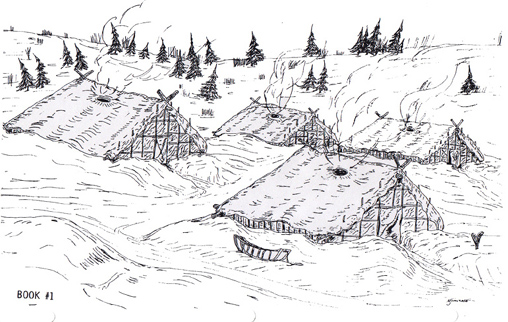
Written by
Patricia H. Partnow
Illustrated by
Michael D. Jimerson
as part of the Athabascan
Indians
of Interior Alaska Social Studies Unit
May 1975
A Production of the Bilingual
Education Center of the Alaska Native Education Board
4510 International Airport Road
Anchorage, Alaska
Copyright
1975 by Alaska
Native Education Board
5-75-500

It's a cold, still morning in November two
hundred years ago. In the interior of what is know known as Alaska,
the rivers and lakes have been frozen for several weeks. Snow covers
the ground and clings to the short branches of the spruce
trees.
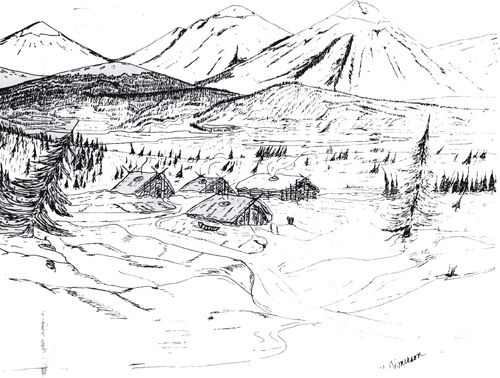
In a clearing, set back from the river a bit,
are four snow-covered houses mounds of white with smoke curling out
of holes in the tops.
This camp is an Athabascan winter camp.
Relatives and good friends, all members of the same band, have
decided to stay at the same camp this winter and have built their
moss-covered houses close together.
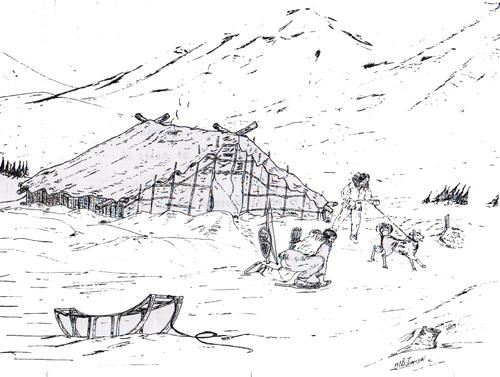
Two men come out of one of the houses carrying
bows, arrows, and sinew snares. Laughing and talking to each other,
they put on long snowshoes, untie a barking dog, and set off with it
across the frozen river and into the forest on the other bank.
A woman, bundled in a caribou-skin parka,
follows them out of the house and walks down to the river to get
water.
A third man walks downriver a bit and checks
his fish net under the ice. Soon the ice will be too thick for
netting and it will be time to jig. But for now the winter run of
whitefish is still filling the nets.

There are both big and small game animals in
the area. It is also a good fishing spot, and close to the migration
route of a herd of caribou.
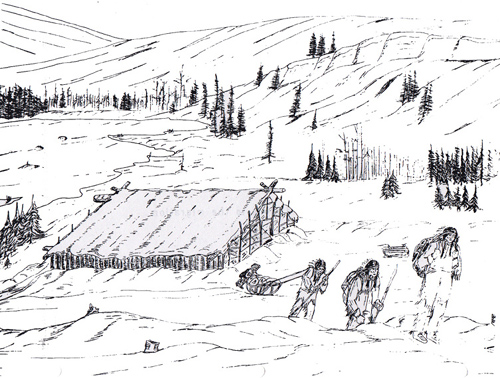
Each of the houses in this winter camp is home
for two families. In one household, the two families decided to live
together because the wives are sisters and their husbands get along
with each other. In another, a married daughter and her husband are
sharing a house with her parents. And in still another, the two men
are hunting partners and good friends, and so decided to share a
house.
These Athabascans will hunt and fish for
awhile, but later on this winter they will break camp and split up.
Each household will go to its own pond or lake to trap beavers, or
will travel to a favorite hunting spot. When they move out of their
winter camp, they will carry their tents, tools, clothes, and weapons
with them. They'll leave only the houses themselves, still covered
with snow.

As spring comes and the snow melts at this
winter camp, the moss and dirt that cover the houses will become wet
and heavy. Water will drip through the planks on the roof, onto the
dirt floor inside. By summer, the poles that held the roofs up will
fall down under the weight of the soggy roof.
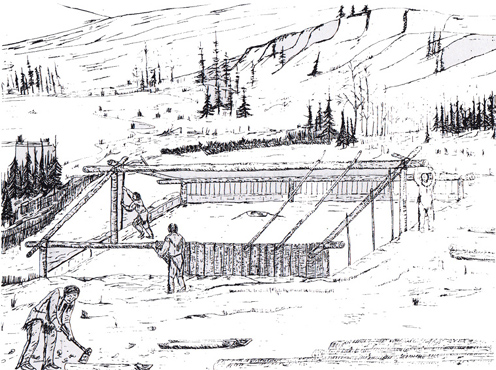
When the people return next fall they will be
glad to see their friends and relatives again. They will see that the
old houses have fallen down, and will start the work of building new
ones. They will by busy with the houses, with fishing and hunting and
getting ready for the winter. It is a good time of year!
Introduction
ANE Curriculum
Overview
Unit Overview
Athabascan
Art Sampler
OCR SCANNED MATERIAL